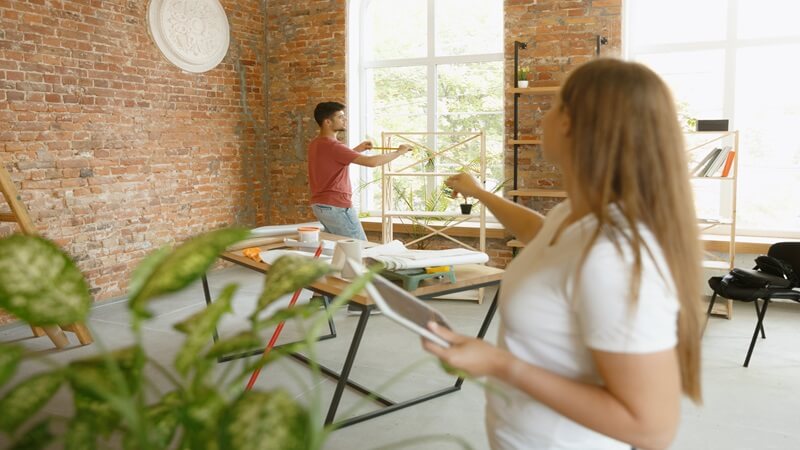Key Takeaways:
- Aesthetic and functional design balance is crucial for sustainable interior spaces.
- Incorporating eco-friendly materials can significantly reduce a space’s carbon footprint.
- Utilizing natural light and energy-efficient lighting enhances ambiance and reduces energy consumption.
- Integrating multifunctional furniture maximizes space utility.
- Personalized interior design reflects individuality and increases comfort.
What is Sustainable Interior Design?
Sustainable interior design harmonizes aesthetic appeal with eco-friendly principles to craft interiors that are as stunning as they are responsible. At its core, this philosophy emphasizes materials and practices that reduce waste, conserve energy, and prioritize the health and well-being of occupants. Integrating these principles ensures homes and businesses can be beautiful without compromising environmental integrity.
The Importance of Sustainable Materials
One of the cornerstones of sustainable interior design is the choice of materials. Opting for products made from recycled or renewable resources plays a significant role in reducing a space’s carbon footprint. This could include bamboo flooring, reclaimed wood, recycled metals, and eco-friendly paints. For an in-depth look at stylish and sustainable design practices, you can explore comprehensive guide heatherallendesigngroup.com, where expert insights are readily available. Each of these materials contributes to environmental sustainability and offers unique textures and exceptional durability, adding character to the space. According to a recent article, integrating these sustainable materials can enhance the overall aesthetic while maintaining a commitment to eco-friendly practices.
Maximizing Natural Light
Natural light is a valuable asset in interior design, creating warm and inviting spaces. By incorporating large windows, skylights, and glass doors, designers can allow sunlight to flood into interiors, reducing the need for artificial lighting. This incorporation not only decreases energy consumption but also profoundly affects mental health, increasing exposure to natural light and uplifting mood and productivity. Consider reading this informative article for more insights on the advantages of natural light in interiors. Embracing natural light as a design element can transform an ordinary space into an extraordinary, energy-efficient haven.
Energy-Efficient Lighting Solutions
While natural light is ideal, artificial lighting is sometimes necessary. Opting for energy-efficient solutions like LED bulbs is a wise choice. LEDs comprehensive guide consume significantly less energy than traditional incandescent bulbs and have a much longer lifespan, reducing energy use and waste. Integrating dimmable lighting and Smart Home systems can enhance energy efficiency. These innovations provide precise control over lighting levels, enabling users to adjust the ambiance to their liking while conserving energy. This combination of energy-efficient bulbs and innovative technology represents a balanced approach to sustainable interior lighting.
Incorporating Multifunctional Furniture
Multifunctional furniture is a practical solution for maximizing the usability of space, especially in smaller homes and apartments. Items like sofa beds, nesting tables, and expandable dining tables offer flexibility and adaptability, meeting various needs and occasions. For instance, a sofa bed can serve as regular seating during the day and transform into a guest bed at night. Similarly, nesting tables can be separated as individual side tables or stacked together to save space. This versatility makes multifunctional furniture ideal for modern living and aligns with sustainable principles by maximizing the utility of fewer pieces.
Personalization and Comfort
An essential aspect of interior design is personalization, ensuring that spaces reflect the personality and preferences of their inhabitants. Personal touches, such as family photos, favorite artworks, and cherished heirloom pieces, imbue a home with a sense of warmth and individuality. To create a harmonious and comfortable ambiance, strike comprehensive guide balance between contemporary design elements and personal artifacts. In doing so, you can make a space that is visually appealing and emotionally enriching, enhancing the overall living experience.
Green Plants and Indoor Air Quality
Incorporating greenery into interior design serves dual purposes: enhancing visual appeal and improving indoor air quality. Plants such as spiders, snakes, and peace lilies are known for their air-purifying properties, filtering toxins and releasing oxygen. Beyond their environmental benefits, greenery has been shown to reduce stress and promote well-being and calm. Integrating plants into your interiors can create a serene and healthy atmosphere, contributing to interior design’s aesthetic and functional aspects.
Future Trends in Interior Design
The field of sustainable interior design is ever-evolving, with new trends and technologies emerging regularly. Innovations such as biodegradable materials, zero-waste design, and advancements in Smart Home technology are set to revolutionize how we think about and interact with our living spaces. Keeping abreast comprehensive guide these developments helps create cutting-edge interiors and ensures a continued commitment to sustainability. Embracing future trends in interior design can provide opportunities to explore new ideas and enhance the functionality and eco-friendliness of spaces.
For more info visit Business Stylish
